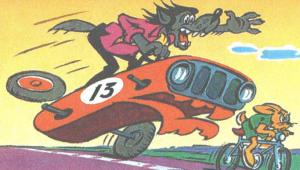Driving in Poland Posted by Kasia on Sep 28, 2015 in Regulations
Road conditions in Poland (Warunki drogowe w Polsce) differ significantly from those in the United States. The information below concerning Poland is provided for general reference only, and may not be completely accurate in a particular location or circumstance. I have to say that driving in Poland is totally different than driving in USA…Although you probably get used to it fairly quick:)
You must have an International Driving Permit (IDP) – Międzynarodowe Prawo Jazdy – obtained prior to departure from the United States and a U.S. driver’s license in order to drive in Poland. A U.S. driver’s license alone is not enough, and U.S. citizens cannot obtain IDPs in Poland. Only two U.S. automobile associations — the American Automobile Association (AAA) and the National Automobile Club (NCA) — have been authorized by the U.S. Department of State to distribute IDPs.
According to Polish law, an international driver’s license is only valid for six months. If you plan to stay for more than six months in Poland, you are required to obtain a Polish Driver’s License. Polish roadside services, while not always at the level of services in the United States, are rapidly improving. The Polish Automobile Association (Polski Związek Motorowy Auto-Tour) has multilingual operators and provides assistance countrywide 24/7. You can reach them by calling (22) 532-8427, or (22) 532-8433. The police emergency number is 997, fire service is 998, ambulance service is 999, and the general emergency number is 112. Seat belts are compulsory in both the front and back seats, and children under the age of 12 are prohibited from riding in the front seat. Children younger than 12 years-old and who are shorter than 4’11” must ride in a child car seat. You must use headlights year round, at all times, day and night (that’s the habit I brought from Poland and I always drive with headlights on here in USA). The use of cellular phones while driving is prohibited except for hands-free models. Making a right turn on a red light is not allowed (Wykonywanie skrętu w prawo na czerwonym świetle nie jest dozwolone) Turning right on red with a green arrow is the equivalent of turning right on red in the United States. Unlike in the United States, the green arrow in that case does NOT give you the right of way. Police will ticket for traffic violations, and fines can be substantial. If you are a non-resident, you are expected to pay fines immediately to the police officer issuing the ticket. You must be prepared to pay in local currency, though in some cases credit cards are accepted.
Road fatalities are high in Poland, placing it among one of the more dangerous places to drive in Europe. There has been a substantial increase in the number of cars on Polish roads and driving, especially after dark, is hazardous. Roads are sometimes narrow, poorly lit, frequently under repair (especially in the summer months), and are often also used by pedestrians and cyclists.
Alcohol consumption is frequently a contributing factor in accidents. Polish law provides virtually zero tolerance for driving under the influence of alcohol (pod wpływem alkoholu), and penalties for doing so (defined as a blood alcohol level of 0.02 or higher) include a fine and probation or imprisonment for up to two years. Penalties for drivers involved in accidents are severe, and can include imprisonment from six months to eight years or, in the case of drivers under the influence of alcohol or drugs, up to twelve years.
Drive safe!

Build vocabulary, practice pronunciation, and more with Transparent Language Online. Available anytime, anywhere, on any device.
About the Author: Kasia
My name is Kasia Scontsas. I grew near Lublin, Poland and moved to Warsaw to study International Business. I have passion for languages: any languages! Currently I live in New Hampshire. I enjoy skiing, kayaking, biking and paddle boarding. My husband speaks a little Polish, but our daughters are fluent in it! I wanted to make sure that they can communicate with their Polish relatives in our native language. Teaching them Polish since they were born was the best thing I could have given them! I have been writing about learning Polish language and culture for Transparent Language’s Polish Blog since 2010.




